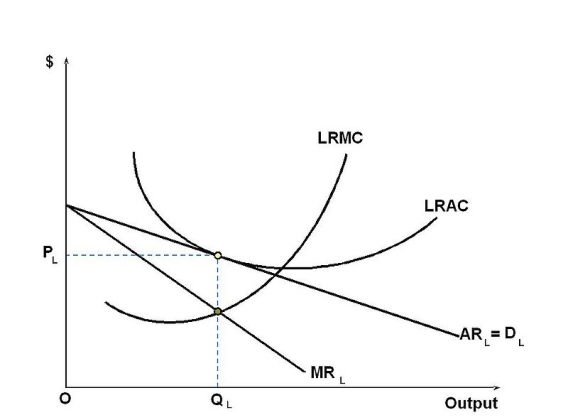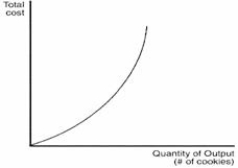A) economies of scale; a larger factory can produce at a lower average cost than a smaller company.
B) economies of scale; a smaller factory can produce at a lower average cost than a larger company.
C) low labor inputs; larger scale of production leads to higher costs.
D) labor inputs; economies-of-scale curve is U-shaped.
Correct Answer

verified
Correct Answer
verified
Multiple Choice
In microeconomics, the term ___________________ is synonymous with decreasing returns of scale.
A) monopoly
B) economies of scale
C) diminishing returns
D) diseconomies of scale
Correct Answer

verified
Correct Answer
verified
Multiple Choice
Refer to the table below.
 If the firm produces 5 units that it sells at a price of $30.00 each, what will its profits or losses equal?
If the firm produces 5 units that it sells at a price of $30.00 each, what will its profits or losses equal?
A) losses equal $5
B) profits equal $5
C) profits equal $25
D) losses equal $25
Correct Answer

verified
Correct Answer
verified
Multiple Choice
 -The graph above illustrates the electricity market. Consider market competition between firms where price is based on AR and select the most appropriate answer.
-The graph above illustrates the electricity market. Consider market competition between firms where price is based on AR and select the most appropriate answer.
A) in the short-run, the demand curve and average revenue shift as other firms enter the market and increase competition
B) in the short-run, the demand curve and average revenue shift as other firms leave the market and decrease competition
C) in the long-run, the demand curve and average revenue shift as other firms enter the market and increase competition
D) in the long-run, the demand curve and average revenue shift as other firms leave the market and decrease competition
Correct Answer

verified
Correct Answer
verified
Multiple Choice
 -The graph above illustrates the total cost function for GoodieCookie Co. The changing slope of the total cost curve reflects this company's
-The graph above illustrates the total cost function for GoodieCookie Co. The changing slope of the total cost curve reflects this company's
A) decreasing average total costs.
B) decreasing marginal costs.
C) decreasing average variable costs.
D) decreasing fixed costs.
Correct Answer

verified
Correct Answer
verified
Multiple Choice
In order to determine the average variable cost, the firm's variable costs are divided by _______________________.
A) its' fixed costs
B) the quantity of output
C) its' average costs
D) diminishing marginal costs
Correct Answer

verified
Correct Answer
verified
Multiple Choice
Whatever the firm's quantity of production, _____________ must exceed total costs if it is to earn a profit.
A) marginal costs
B) average costs
C) total revenue
D) variable costs
Correct Answer

verified
Correct Answer
verified
Showing 61 - 67 of 67
Related Exams